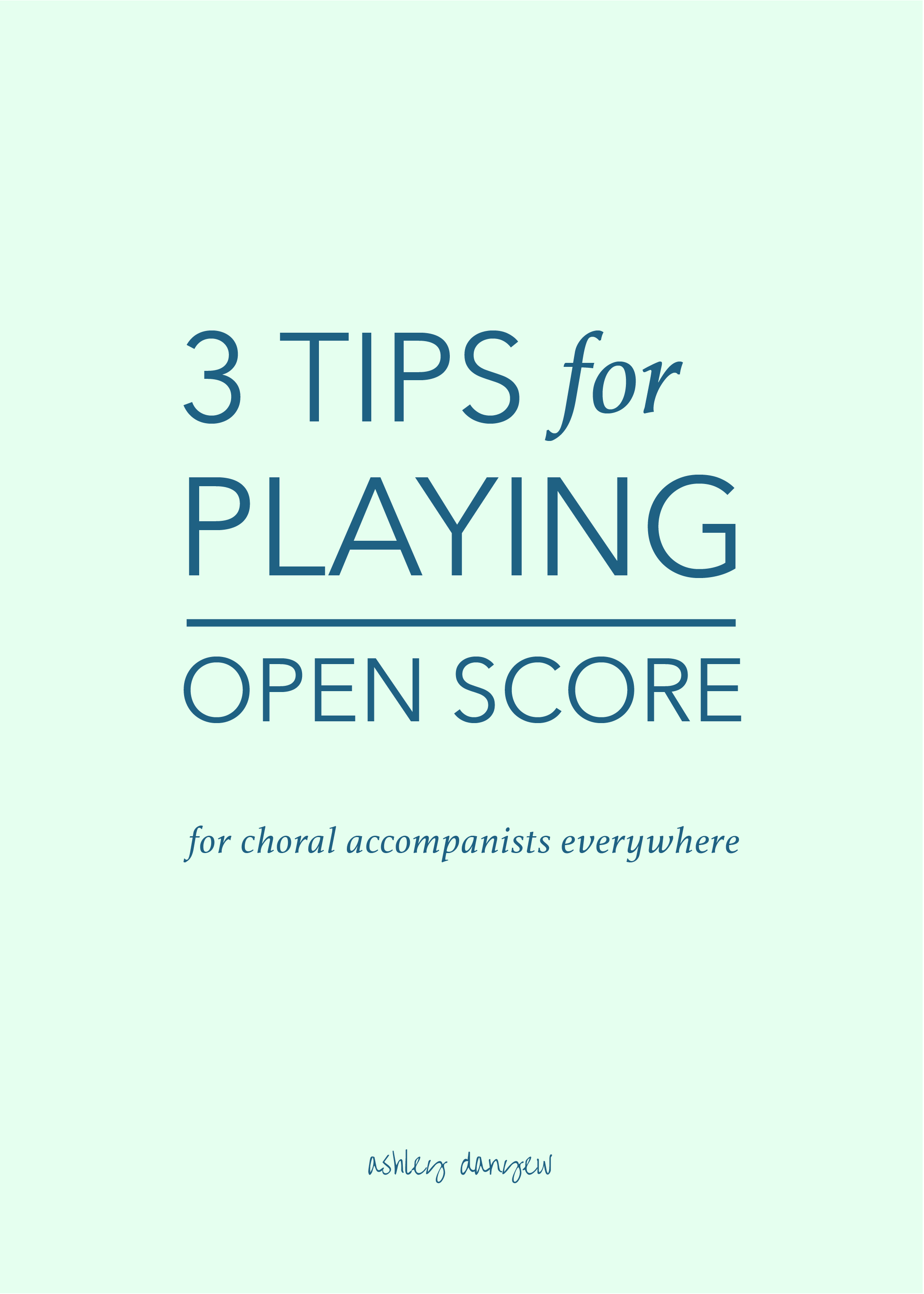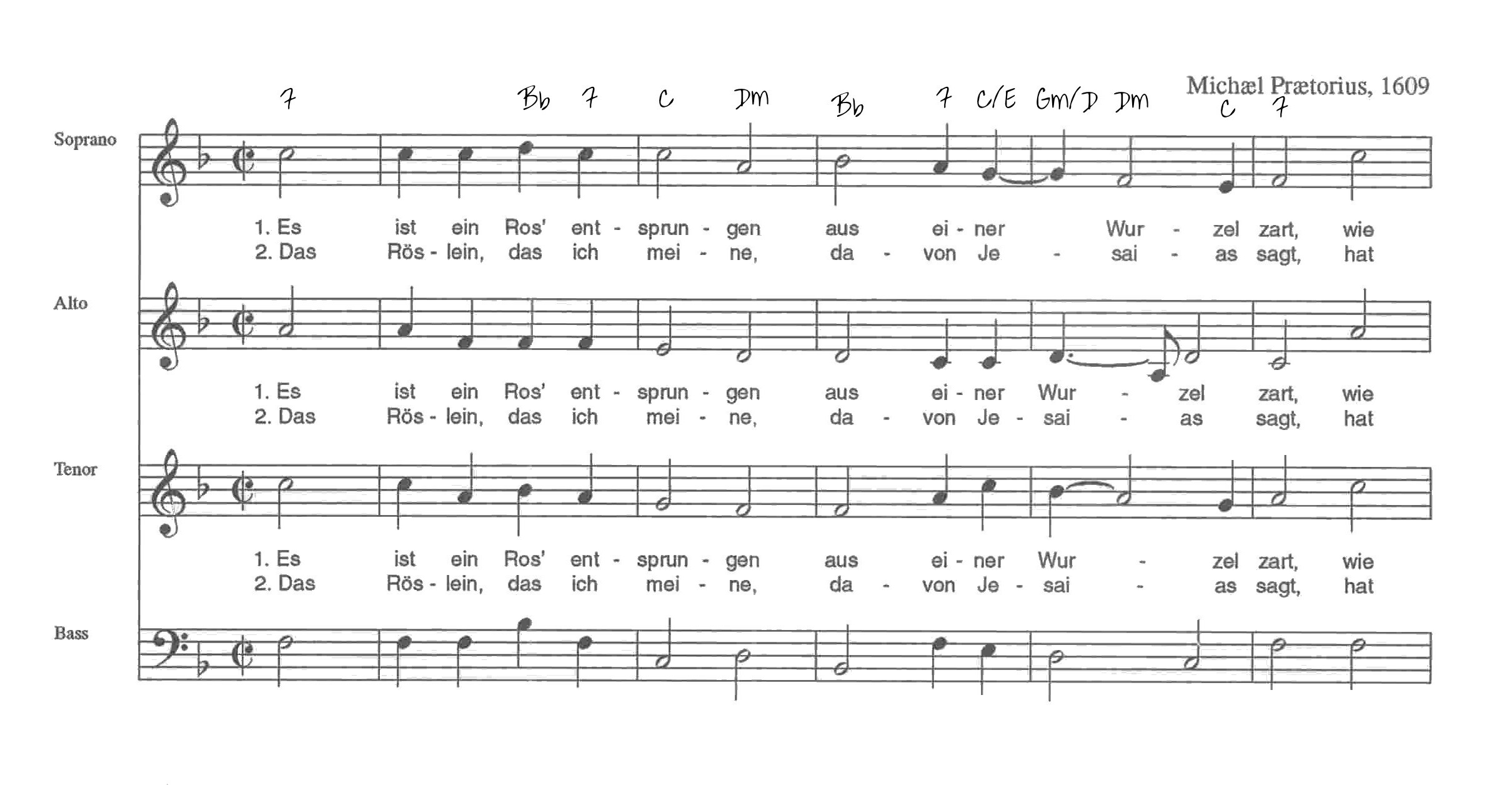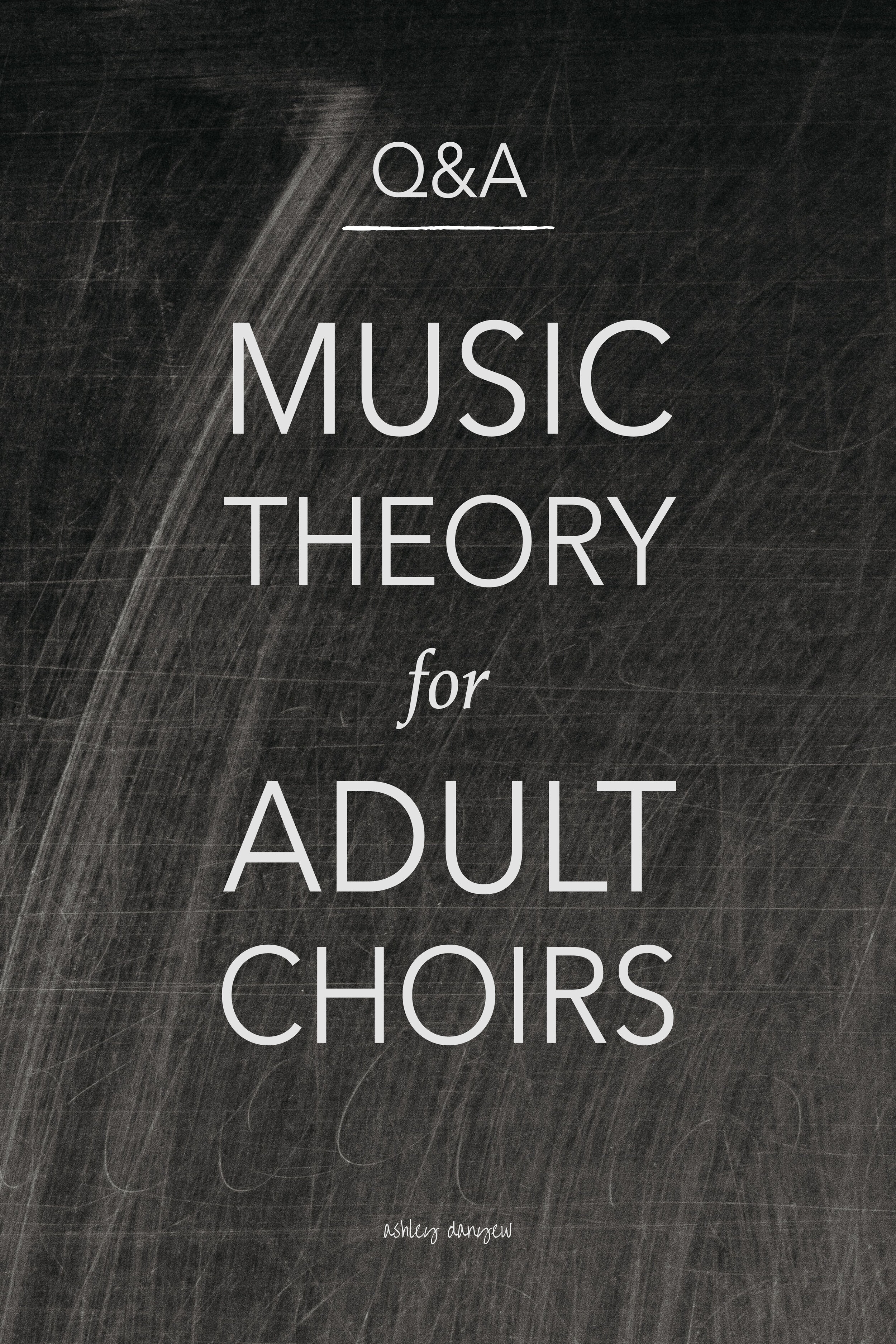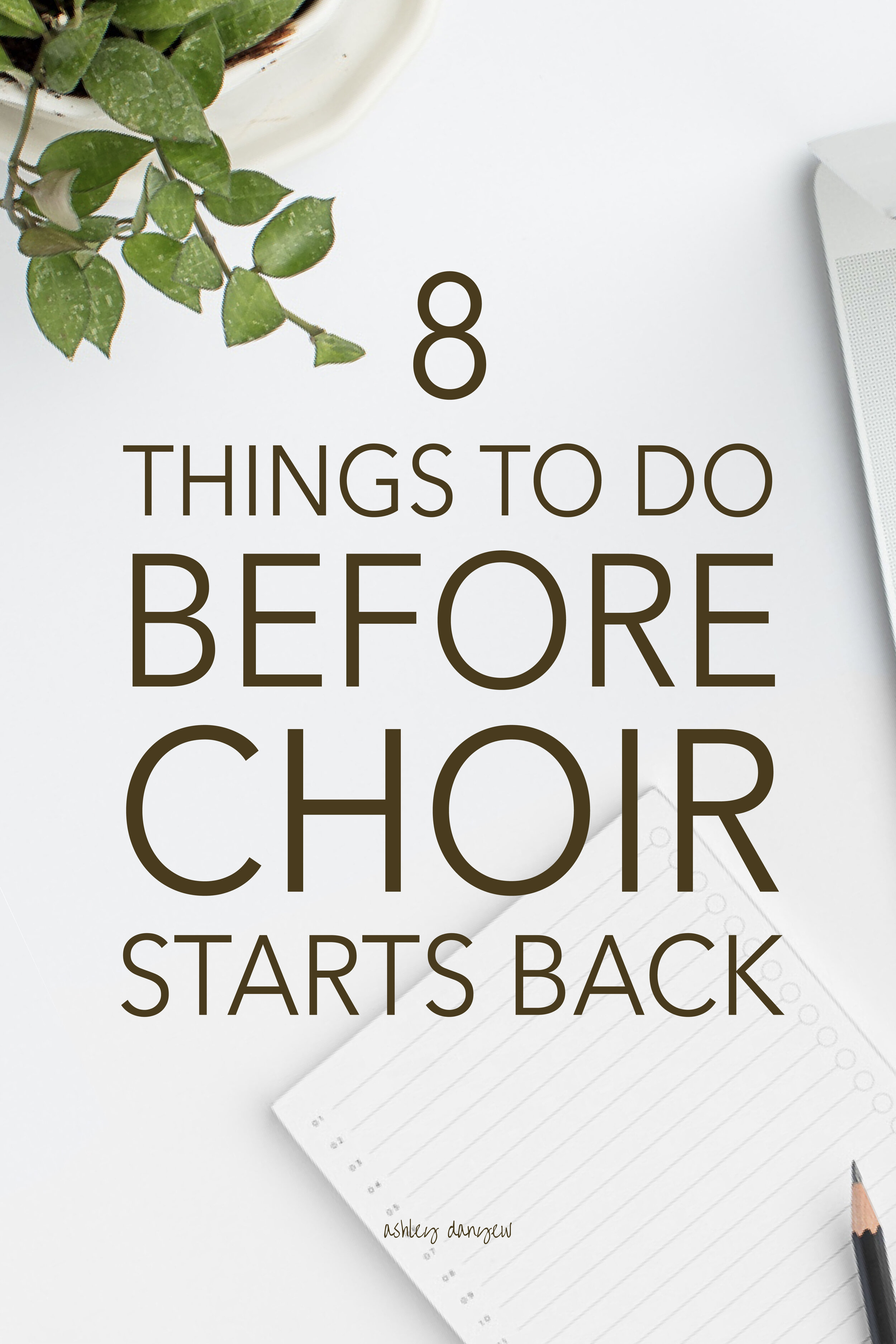As all choral accompanists know, playing from open score is a fact of life.
At one point or another, you'll likely find yourself sitting at the keyboard in front of a choral score with no piano reduction, forced to muddle your way through reading four lines of music at the same time.
How can you prepare? What can you do to develop this skill and build confidence for the future?
If you have the opportunity to practice the music in advance, there are a few things you can do.
Today, I’m sharing three tips/tricks for playing open score that I’ve gleaned over the years. I hope they’re helpful to you!
3 Tips for Playing Open Score
1. Practice systematically.
This is probably the most common piece of advice you'll receive, but careful, systematic practice is a helpful first step toward developing this skill and training your eyes to read four lines of music at once.
Begin by playing each part individually: soprano and alto parts with your right hand, tenor and bass parts with your left hand.
Once you've played each part, practice them in all 2-part combinations: SA, ST, SB, AT, AB, TB. Again, try to keep SA parts in your right hand and TB parts in your left.
Once you're comfortable with 2-part combinations, try playing three parts: SAT, SAB, STB, ATB. Look for patterns that are the same across parts, or places where parts move together in 3rd, 6ths, etc.
After rehearsing all 3-part combinations, read all four parts in a slow, steady tempo.
2. Write in the chord symbols.
This trick works great for chorales and more homophonic choral works (where all the voices move together or have similar rhythm). Write in chord symbols (e.g. G, D7, C, Am) above the staff to mark places where the harmony changes. Here is an example:
3. Make your own piano reduction.
If you have the time, this might be a good option, especially if the parts are fairly complex (e.g. a fugue). Use your favorite notation software (or a free version, like Finale Notepad) to create a new score.
Pro tip: Keep the choral parts in your score for ease of part-playing in rehearsal. Use the reduction when doubling all the voice parts.
As with most things, the best way to improve your open score reading skills is by practicing. Even if you don't have open score choral works to prepare for rehearsal, challenge yourself to work through some Bach chorales. The more you do it, the easier it will be.
Need more support?
Join me in The Church Musician Primer, a 4-week online keyboard skills class for church music directors, keyboardists, and organists to help you learn and develop must-have 21st-century music skills.
I’d love to hear from you:
Have other tips for playing open score that I didn't mention? Leave a comment below. P.S. You may also like this post: How to Practice Efficiently in 30 Minutes Or Less








































